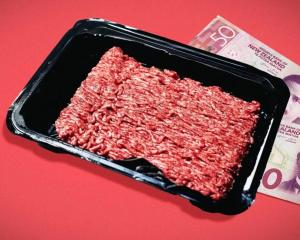
The red meat co-operative is holding a series of meetings to update suppliers and forecast livestock prices for the coming season.
Only a handful of farmers attended the Kurow meeting on October 8.
Livestock and shareholder services general manager Heather Stacy said lamb was expected to fetch $6.50 to $8.10 per kilogram until December, then $6.10 to $6.50 from January to March.
Mutton should make $4.30 to $4.85 this year, then $4.30 to $4.85 in the the first quarter of 2019.
Brexit and exchange rates were variables, but there was good demand from North America and China, she said.
Prime cattle was forecast at $4.80 to $5.50 before Christmas and $4.80 to $5.30 from January to March.
Cow was expected to make $4 to $4.30 in the current quarter, then $3.80 to $4.
Bull should fetch $4.80 to $5 through December and $4.80 to $4.90 early next year.
A high inventory of beef was causing procurement tension in the field, Ms Stacy said.
African swine flu in China was affecting pork sales there, but it was not yet known whether consumers would turn to beef instead, she said. The flu had now been detected in Europe, too.
The Australian drought would lead to a drop in quality but a lot of volume.
Venison had been ''very strong'', showing good diversification, including into pet food. But customers were now balking at the high prices. Alliance forecast $11 to $11.75 before Christmas and $10.40 to $11 from January to March.
Chief executive David Surveyor acknowledged Alliance had ''work to do'' in boosting beef prices. A computer programme would be brought in to assess how to get the highest value from each animal - a system already used for lamb.
Alliance made an extra $4million this year from blood products sold to the health sector. Some customers would not accept blood from animals with Mycoplasma bovis, but most global markets were fine with their meat, Mr Surveyor said.
Alliance's moves to bring in overseas workers had received ''a little bit of press'', he said. A hundred people were needed for its Lorneville plant, to prevent ''$20million of waste that goes down a rendering chute because we have not got access to people''.
There were about 2000 vacancies in the red meat sector, so it was a worthwhile issue ''to make a bit of a kerfuffle about''.
Other initiatives he outlined were streamlining marketing of chilled products in China, having staff accredited from training courses to improve processing and technical skills, getting real-time feedback on each shift so it could be changed while it was in progress, investing in the Natural Fibre Exchange for wool, negotiating with the world's biggest furnishings company to use Alliance skins and hides plus its meat in an associated food company, and setting up a food service venture in North America targeting top-end restaurants.
Alliance was now marketing itself not as a commodity player but as a premium food company with close connections between farmers and consumers, Mr Surveyor said.
''We've got to spend forward to break the commodity model.''














